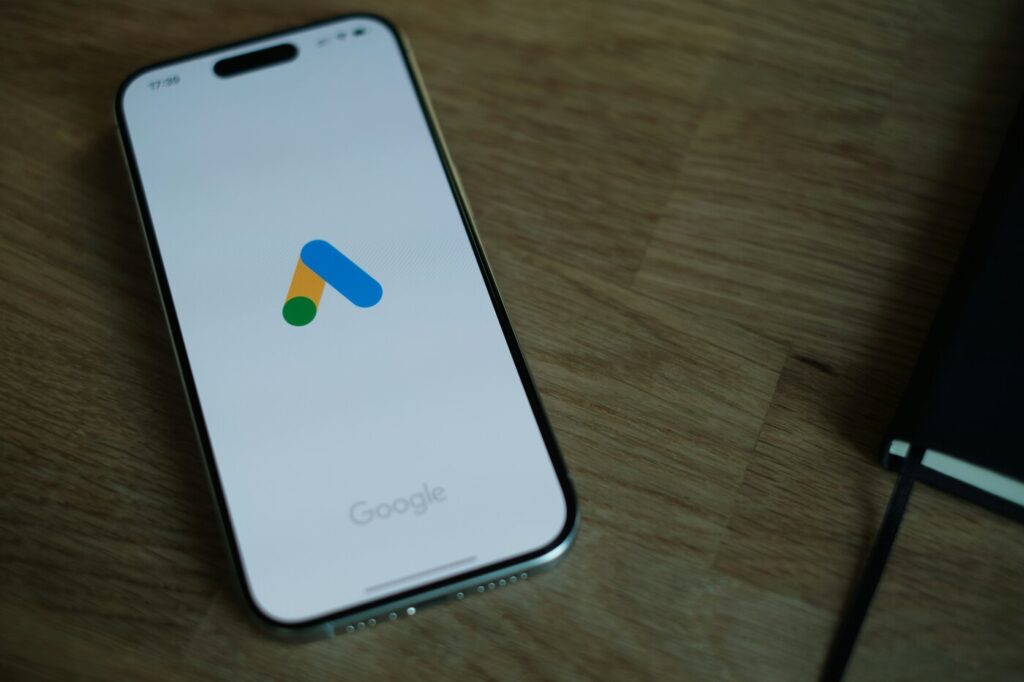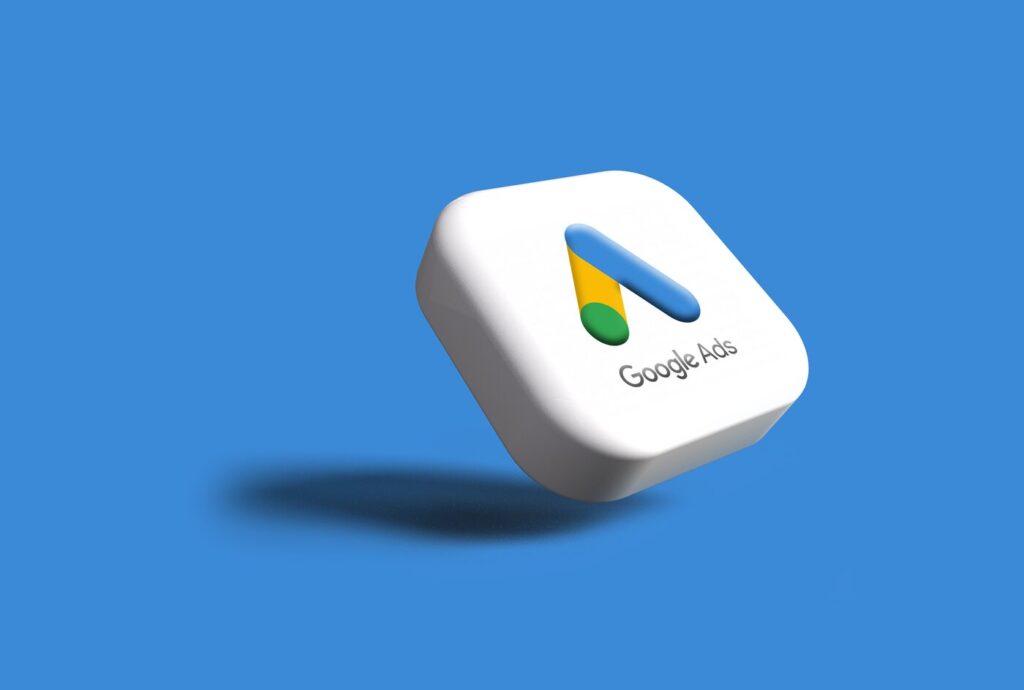Published: July 31, 2025
Category: PPC & Paid Advertising
Reading Time: 14 minutes
The $50,000 Shopping Campaign That Sold 3 Products
Sarah runs a home decor e-commerce store. After 6 months and $50,000 in ad spend managed by a “Google Premier Partner” agency, her Shopping campaigns had generated exactly 3 sales.
Three. Sales.
Her agency’s explanation? “Shopping campaigns take time to optimize. We recommend increasing budget for better volume.”
When Sarah fired them and I audited her account, I found the problem in 10 minutes:
- Product feed had 847 errors (agency never fixed them)
- All products in one campaign with identical bids
- No negative keywords after 6 months of data
- Generic product titles that didn’t match search terms
- Missing product categories causing disapprovals
- Zero campaign structure beyond Google’s auto-generated setup
The agency had charged $4,000/month to essentially hit “publish” on Google’s default Shopping campaign and collect management fees while her money burned.
This is why your Shopping ads suck.
Most agencies treat Shopping campaigns as easy money. Set up auto-bidding, upload your product feed, and collect monthly management fees while Google’s algorithms do all the work. They’re betting you don’t understand how Shopping optimization actually works.
Here’s what they don’t want you to know: Shopping campaigns require specific, ongoing optimization that most agencies simply don’t do.
The agencies charging $3,000-$5,000/month for Shopping management are often doing less actual work than any other campaign type, while your ad spend hemorrhages money on irrelevant clicks.
Stop accepting mediocre Shopping performance.
In this guide, I’ll show you exactly how to optimize Google Shopping campaigns for maximum ROI—and why most agencies fail to deliver results despite charging premium management fees.
Why 73% of Shopping Campaigns Fail (Agency Laziness Exposed)

Google Shopping looks deceptively simple. Upload product feed, set bids, launch campaigns. What could go wrong?
Everything.
Shopping campaigns have more optimization variables than search campaigns, but most agencies treat them like “set it and forget it” money-makers.
The Lazy Agency Shopping Setup
What 90% of agencies actually do:
Week 1: Upload client’s existing product feed without optimization
Week 2: Create single Shopping campaign with auto-bidding
Week 3: Set generic bids across all products
Week 4: Turn on ads and start collecting management fees
Months 2-12: Send monthly reports showing “impressions growth” while avoiding ROAS discussions
The result? Your money gets wasted on irrelevant traffic while profitable products never get seen.
What Proper Shopping Optimization Actually Requires
Product feed optimization: 2-4 hours weekly
Negative keyword management: 1-2 hours weekly
Bid optimization: 2-3 hours weekly
Campaign structure refinement: 1-2 hours weekly
Performance analysis: 1-2 hours weekly
Total optimization time: 7-13 hours weekly
What most agencies actually spend: 30 minutes monthly sending automated reports
The Mathematical Reality
Let’s break down why agency Shopping management usually fails:
Agency charges: $4,000/month
Actual optimization time: 2 hours/month
Effective hourly rate: $2,000/hour
No optimization can be effective at $2,000/hour.
Agencies price Shopping management based on your ad spend percentage, not optimization complexity. The bigger your budget, the higher their fees—regardless of optimization quality.
Meanwhile, your campaigns underperform because they’re not getting the 7-13 hours weekly of optimization they actually need.
The 7 Reasons Your Shopping Campaigns Are Hemorrhaging Money

Before diving into solutions, let’s diagnose what’s actually broken in your current Shopping setup:
1. Your Product Feed Is a Disaster (And Your Agency Ignored It)
The problem: 67% of Shopping campaign failures stem from product feed issues that agencies never fix.
Common feed disasters:
- Product titles stuffed with irrelevant keywords
- Missing or incorrect product categories
- Low-quality or missing product images
- Inaccurate availability and pricing data
- Generic descriptions that don’t match search intent
Why agencies ignore feed optimization:
- It’s time-consuming manual work
- No recurring revenue from one-time fixes
- Requires actual product knowledge
- Can’t be automated or outsourced easily
- Results aren’t immediately visible in reports
The impact: Google disapproves products, shows ads for irrelevant searches, and wastes budget on unqualified clicks.
2. Everything Runs in One Giant, Unfocused Campaign
The problem: Agencies dump all products into single campaigns because it’s easier to manage.
What this looks like:
- All 500+ products in one “Shopping Campaign”
- Identical bids for $5 keychains and $500 furniture
- No separation between bestsellers and clearance items
- High-margin and low-margin products competing for same budget
- No ability to optimize performance by product category
Why agencies do this:
- Faster initial setup
- Fewer campaigns to monitor
- Easier monthly reporting
- Less strategic thinking required
- Can claim “simplified account structure”
The result: Your profitable products get underbid while money-losing items waste budget.
3. No Negative Keyword Strategy (Because It Requires Actual Work)
The problem: Shopping campaigns without negative keywords are like trying to fill a bucket with holes in the bottom.
What’s happening without negative keywords:
- Your “leather sofa” ads show for “free leather couch” searches
- “Premium headphones” ads trigger on “cheap headphone” queries
- “Designer handbag” campaigns waste money on “fake designer bag” clicks
- B2B product ads show to consumer bargain hunters
Why agencies skip negative keyword management:
- Requires ongoing weekly analysis
- No automated tools for Shopping negative keywords
- Must understand search intent and product positioning
- Time-intensive manual review process
- Results show up as “decreased impressions” (looks bad in reports)
The cost: 30-50% of your Shopping budget gets wasted on irrelevant, non-converting traffic.
4. Bidding Strategy Optimized for Agency Reporting, Not Your Profits
The problem: Agencies choose bidding strategies that make their reports look good, not strategies that maximize your profitability.
Agency-preferred bidding strategies:
- Maximize Clicks: Shows high click volume in reports
- Target Impression Share: Guarantees high impression numbers
- Enhanced CPC: Easy to implement, hard to blame for poor performance
Why these strategies often fail:
- Maximize Clicks ignores conversion value and profitability
- Target Impression Share wastes money on unwinnable auctions
- Enhanced CPC often increases costs without improving results
What works better (but requires more agency work):
- Manual bidding with product-specific optimization
- Target ROAS with realistic, profit-based goals
- Maximize Conversion Value with proper tracking setup
5. Zero Product-Level Performance Analysis
The problem: Agencies report campaign-level metrics while ignoring which specific products are profitable.
What agencies report:
- Total campaign impressions
- Overall click-through rates
- Campaign-level conversion rates
- Generic “Shopping performance is improving” statements
What they ignore:
- Which specific products drive profitable sales
- Product-level ROAS and margin analysis
- Inventory-based bid optimization opportunities
- Seasonal performance patterns by product category
- Competitor pricing impact on individual product performance
Why this matters: Your $2,000 leather sofa and $20 throw pillow shouldn’t have the same bid strategy, but agencies treat them identically.
6. No Integration with Inventory or Pricing Strategy
The problem: Agencies manage Shopping campaigns in isolation from your actual business operations.
Missed optimization opportunities:
- High inventory products could have higher bids for faster turnover
- Low stock items should have reduced bids to prevent stockouts
- Seasonal products need proactive bid adjustments
- Price changes should trigger immediate bid modifications
- New product launches require coordinated campaign strategy
Why agencies avoid this:
- Requires understanding your business beyond ad metrics
- Can’t be automated with standard PPC tools
- Needs regular communication with your team
- Involves strategic thinking, not just campaign management
- Results don’t show up in standard Google Ads reports
7. Campaign Structure Designed for Agency Convenience, Not Performance
The problem: Agencies organize campaigns to minimize their management time, not to maximize your results.
Agency-convenient structure:
- Shopping Campaign #1: All Products
- Shopping Campaign #2: Sale Items
- Shopping Campaign #3: High-Value Products
Performance-optimized structure:
- Brand Defense: Exact brand name searches
- Generic High-Intent: Category + buying intent keywords
- Generic Discovery: Broader category searches
- Competitor Targeting: Competitor brand name searches
- Remarketing: Previous website visitors
- Product-specific: Individual high-value products
Why agencies avoid proper structure:
- Requires deep keyword and search intent analysis
- More campaigns mean more optimization work
- Complex reporting across multiple campaign types
- Can’t use “simple account structure” as selling point
- Initial setup takes 3-5x longer
The Complete Shopping Campaign Optimization Framework

Here’s how to actually optimize Shopping campaigns for profitable performance:
Phase 1: Product Feed Optimization (Foundation)
Time investment: 4-6 hours initially, then 1-2 hours weekly
What agencies charge for this: $2,000-$4,000 setup + $500-$1,000/month ongoing
Step 1: Optimize Product Titles for Search Intent
Bad (agency standard):
Title: "Red Leather Sofa Furniture Home Decor Living Room Couch Chair Sectional Modern Contemporary Style"
Good (search-optimized):
Title: "Modern Red Leather Sectional Sofa - 3 Seat Living Room Couch"
Title optimization rules:
- Lead with primary keyword (what people actually search for)
- Include size, color, material in first 60 characters
- Add brand name if it has search volume
- Avoid keyword stuffing and redundant terms
- Include key differentiators (size, style, special features)
Step 2: Categorize Products Correctly
Use Google’s product taxonomy: Products in wrong categories get disapproved or shown for irrelevant searches.
Common category mistakes:
- “Sofa” categorized as “Home & Garden > Furniture > Chairs” instead of “Sofas”
- “Running shoes” in “Clothing & Accessories” instead of “Apparel & Accessories > Shoes > Athletic Shoes”
- “Kitchen knife” in “Tools” instead of “Home & Garden > Kitchen & Dining > Kitchen Tools & Utensils”
Category optimization impact:
- 20-40% more relevant impressions
- 15-25% higher click-through rates
- 10-30% better conversion rates
- Fewer disapprovals and policy violations
Step 3: Optimize Product Images for Click-Through
Image requirements that agencies often ignore:
- Minimum 800×800 pixels (higher resolution = better performance)
- Clean white background for product images
- Multiple angles for complex products
- Lifestyle images for appropriate products
- Consistent styling across product line
Advanced image optimization:
- A/B testing different product images
- Seasonal image updates
- Competitor visual analysis
- Mobile-specific image considerations
Phase 2: Campaign Structure for Performance
Time investment: 6-8 hours setup, then 2-3 hours weekly optimization
What agencies charge for this: $3,000-$5,000 setup + $1,500-$2,500/month management
Campaign Structure Framework:
Campaign 1: Brand Defense (Highest Priority)
- Products: All products
- Priority: High
- Negative keywords: None (capture all brand searches)
- Bid strategy: Target top of page impression share
- Goal: Protect against competitor ads on your brand terms
Campaign 2: Generic High-Intent (Second Priority)
- Products: Best-selling, high-margin products
- Priority: Medium
- Negative keywords: Brand terms, low-intent terms
- Bid strategy: Target ROAS based on product margins
- Goal: Capture ready-to-buy shoppers
Campaign 3: Generic Discovery (Lower Priority)
- Products: Full product catalog
- Priority: Low
- Negative keywords: Brand terms, high-intent terms
- Bid strategy: Maximize conversion value
- Goal: Reach new customers in research phase
Campaign 4: Remarketing Shopping
- Products: Products viewed but not purchased
- Audience: Website visitors from last 30 days
- Bid strategy: Higher bids for warm traffic
- Goal: Recapture interested prospects
Phase 3: Negative Keyword Strategy
Time investment: 2-3 hours weekly
What agencies charge for this: Usually ignored or $500-$1,000/month
Essential negative keyword categories:
1. Low-Intent Qualifiers
- “Free,” “cheap,” “discount,” “coupon,” “deal”
- “Used,” “second hand,” “refurbished” (if you sell new)
- “DIY,” “how to make,” “tutorial” (for finished products)
2. Wrong Product Categories
- If you sell sofas: “sofa bed,” “outdoor sofa,” “dog sofa”
- If you sell headphones: “headphone stand,” “headphone case,” “broken headphones”
3. Competitor and Unrelated Brands
- Direct competitor brand names
- Unrelated brands in your product category
- Generic terms you don’t want to compete for
4. B2B vs B2C Intent Mismatches
- “Wholesale,” “bulk,” “commercial,” “industrial” (if you’re B2C)
- “Personal,” “home,” “individual” (if you’re B2B)
Weekly negative keyword process:
- Export search terms report
- Identify irrelevant/unprofitable queries
- Add negative keywords at appropriate campaign level
- Monitor for new irrelevant traffic patterns
- Adjust negative keyword lists based on performance data
Phase 4: Bid Optimization by Product Performance
Time investment: 3-4 hours weekly
What agencies charge for this: $1,000-$2,000/month (often poorly executed)
Product-level bid strategy:
High-Margin, High-Volume Products:
- Aggressive bidding to maximize market share
- Target 80-90% impression share
- Accept higher CPCs for profitable traffic
- Monitor competitor pricing and adjust accordingly
High-Margin, Low-Volume Products:
- Conservative bidding to maintain profitability
- Focus on high-intent traffic only
- Lower impression share targets (40-60%)
- Emphasis on conversion rate over volume
Low-Margin, High-Volume Products:
- Volume-based bidding with strict ROAS targets
- Automated bidding with conversion value optimization
- Negative keywords to avoid low-intent traffic
- Regular margin analysis and bid adjustments
Seasonal/Clearance Products:
- Inventory-based bid adjustments
- Higher bids when overstocked
- Reduced bids when low inventory
- Promotional period optimization
Phase 5: Performance Analysis and Optimization
Time investment: 2-3 hours weekly
What agencies charge for this: $500-$1,500/month (usually surface-level reporting)
Weekly optimization checklist:
Product Performance Review:
- Identify top-performing products by ROAS
- Analyze underperforming products for optimization opportunities
- Review new products for initial performance trends
- Check for inventory issues affecting campaign performance
Search Query Analysis:
- Export and review search terms for new negative keyword opportunities
- Identify high-performing queries for bid increases
- Look for new product opportunities based on search demand
- Monitor competitor activity in search results
Campaign Performance Optimization:
- Adjust bids based on product-level performance data
- Reallocate budget from underperforming to profitable campaigns
- Test new campaign structures or bidding strategies
- Review and optimize campaign settings and targeting
Competitive Analysis:
- Monitor competitor pricing changes
- Analyze competitor product feed improvements
- Adjust strategy based on competitive landscape changes
- Identify new market opportunities
Red Flags: How to Spot Lazy Shopping Campaign Management

Watch for these warning signs that your agency isn’t actually optimizing your Shopping campaigns:
Reporting Red Flags
What lazy agencies report:
- “Impressions increased 45% month-over-month”
- “Click-through rate improved across all campaigns”
- “Shopping campaigns are performing well”
- Generic Google Ads reports with no product-specific analysis
What you should demand:
- Product-level ROAS and profitability analysis
- Specific optimization actions taken each month
- Search query review and negative keyword additions
- Inventory-based performance adjustments
- Competitive analysis and strategic recommendations
Management Red Flags
Warning signs of poor Shopping management:
- No product feed changes in months of management
- Identical bids across all product categories
- Single Shopping campaign for entire product catalog
- No negative keywords added after initial setup
- Monthly management calls that avoid ROAS discussions
Communication Red Flags
Phrases that indicate lazy management:
- “Shopping campaigns need time to optimize” (past month 3)
- “Google’s algorithms are still learning” (as excuse for poor performance)
- “We’re testing different bidding strategies” (without specific hypotheses)
- “Your product feed looks good” (without specific optimization details)
- “Shopping performance is industry-standard” (when ROAS is poor)
The Real Cost of Proper Shopping Campaign Management

Let’s break down what comprehensive Shopping optimization actually costs versus what agencies charge:
Comprehensive Shopping Management
Weekly time requirements:
- Product feed optimization: 2 hours
- Negative keyword research: 1.5 hours
- Bid optimization: 2.5 hours
- Performance analysis: 1.5 hours
- Strategic planning: 1 hour
Total weekly time: 8.5 hours
Monthly time: ~34 hours
At $100/hour (fair specialist rate): $3,400/month
What Agencies Actually Charge
Typical agency pricing:
- 10-15% of ad spend
- $50,000/month spend = $5,000-$7,500/month management
- $100,000/month spend = $10,000-$15,000/month management
Time agencies actually spend:
- Initial setup: 4-6 hours
- Monthly maintenance: 2-4 hours
- Monthly reporting: 1-2 hours
Actual monthly time: 3-6 hours
Effective hourly rate: $833-$5,000/hour
The Navu Approach
Our Shopping campaign management:
- Fixed monthly fee regardless of ad spend
- Actual optimization time investment: 30-40 hours/month
- Product-level performance analysis included
- Feed optimization and negative keyword management included
- No percentage-based pricing that penalizes your success
Why we can offer comprehensive management for less:
- No overhead for “account coordinators” who don’t optimize
- No commission structure that rewards higher ad spend
- No inflated pricing to support fancy office spaces
- Direct access to the people doing the actual optimization work
DIY Shopping Optimization: Complete Implementation Guide

If you want to optimize your Shopping campaigns yourself rather than pay agency markups, here’s the complete implementation guide:
Week 1: Foundation Setup
Day 1-2: Product Feed Audit
- Export current product feed from Merchant Center
- Review titles for search intent optimization opportunities
- Check product categories against Google’s taxonomy
- Identify missing or low-quality product images
Day 3-4: Campaign Structure Analysis
- Document current campaign setup
- Identify consolidation or separation opportunities
- Plan new campaign structure based on performance goals
- Prepare for campaign restructuring implementation
Day 5: Initial Negative Keyword Research
- Export search terms report from last 30 days
- Identify irrelevant queries that wasted budget
- Create initial negative keyword lists by campaign
- Implement high-impact negative keywords immediately
Week 2: Campaign Structure Implementation
Day 1-3: New Campaign Creation
- Build brand defense campaign with high priority
- Create generic high-intent campaign with medium priority
- Set up discovery campaign with low priority
- Configure remarketing Shopping campaign for website visitors
Day 4-5: Product Group Organization
- Organize products by margin and performance potential
- Set initial bids based on product profitability
- Configure proper product group structure within campaigns
- Test campaign launch with small budget
Week 3: Feed Optimization
Day 1-2: Title Optimization
- Rewrite product titles for search intent alignment
- Include key attributes in first 60 characters
- Remove keyword stuffing and redundant terms
- Test title changes with small product segments
Day 3-4: Category and Attribute Improvement
- Correct product categories using Google taxonomy
- Add missing product attributes (size, color, material)
- Improve product descriptions for Google’s understanding
- Update product images where necessary
Day 5: Feed Testing and Validation
- Upload optimized feed to Merchant Center
- Monitor for approval issues or policy violations
- Test campaign performance with optimized products
- Document changes for future reference
Week 4: Performance Optimization
Day 1-2: Bid Strategy Implementation
- Implement product-specific bidding based on margins
- Set up automated bid rules for high-performing products
- Configure Target ROAS for appropriate campaigns
- Monitor early performance indicators
Day 3-4: Negative Keyword Expansion
- Conduct comprehensive search query review
- Add negative keywords at campaign and ad group levels
- Create negative keyword lists for different product categories
- Set up weekly search query review process
Day 5: Performance Baseline Establishment
- Document baseline performance metrics
- Set up tracking for product-level ROAS
- Create performance monitoring dashboard
- Plan ongoing optimization schedule
Ongoing Weekly Optimization (After Month 1)
Monday: Performance Analysis (1.5 hours)
- Review product-level performance from previous week
- Identify top-performing and underperforming products
- Analyze search query data for optimization opportunities
- Plan week’s optimization priorities
Tuesday: Feed Maintenance (2 hours)
- Update product availability and pricing
- Optimize titles for newly identified high-performing search terms
- Add new products with proper optimization
- Review and fix any feed approval issues
Wednesday: Bid Optimization (2.5 hours)
- Adjust bids based on product performance data
- Reallocate budget from underperforming to profitable products
- Test new bidding strategies for specific product segments
- Monitor competitor pricing and adjust accordingly
Thursday: Negative Keyword Management (1.5 hours)
- Review search terms report for irrelevant queries
- Add negative keywords to prevent budget waste
- Refine negative keyword lists based on new data
- Monitor impact of recent negative keyword additions
Friday: Strategic Review (1 hour)
- Analyze week’s performance against goals
- Plan next week’s optimization priorities
- Document successful optimization strategies
- Review competitive landscape changes
Stop Accepting Mediocre Shopping Performance

Most businesses accept terrible Shopping campaign results because agencies have convinced them that “Shopping is hard to optimize” or “results take time.”
This is nonsense.
Well-optimized Shopping campaigns should deliver profitable results within 30-60 days of proper implementation. If your campaigns aren’t profitable after 3 months, the problem isn’t your products or market—it’s your optimization.
What Good Shopping Performance Looks Like
By Week 4:
- Product feed errors resolved
- Campaign structure optimized for performance
- Initial negative keyword lists implemented
- Baseline performance metrics established
By Week 8:
- ROAS improving toward target levels
- Irrelevant traffic significantly reduced
- Top-performing products identified and optimized
- Bid strategy refined based on performance data
By Week 12:
- Consistent profitability across campaign structure
- Automated optimization processes established
- Seasonal and inventory-based optimization implemented
- Clear understanding of profitable vs. unprofitable products
What to Demand from Agency Management
If you choose to work with an agency for Shopping optimization, demand these specific deliverables:
Monthly Optimization Reports:
- Product-level ROAS and profitability analysis
- Specific feed optimizations implemented
- Negative keywords added with rationale
- Bid adjustments made with performance justification
- Competitive analysis and strategic recommendations
Quarterly Strategic Reviews:
- Campaign structure optimization opportunities
- Feed optimization roadmap for next quarter
- Seasonal strategy planning and implementation
- Inventory-based optimization recommendations
- Market expansion opportunities analysis
The Bottom Line: Your Shopping Ads Don’t Have to Suck

Shopping campaign optimization isn’t rocket science—it’s systematic, ongoing work that most agencies simply don’t do.
The agencies charging $5,000/month for Shopping management are often doing less actual optimization than any other campaign type.
They’re betting that you don’t understand the difference between pushing “start” on auto-bidding campaigns and actually optimizing for profitable performance.
What Actually Works
Systematic feed optimization that makes your products appear for relevant searches
Strategic campaign structure that separates high-intent from discovery traffic
Aggressive negative keyword management that prevents budget waste
Product-level bid optimization based on actual margins and performance
Ongoing performance analysis that identifies opportunities and problems
What Doesn’t Work (Despite Agency Claims)
“Set it and forget it” auto-bidding that ignores product-level profitability
Single campaign structures that treat all products identically
Generic optimization that doesn’t consider your specific business model
Percentage-based management fees that reward higher spend over better results
Monthly reports that avoid discussing actual ROAS and profitability
Ready to fix your Shopping campaigns without paying agency markups? Book a free consultation with our team. We’ll audit your current Shopping setup, identify the biggest waste areas, and show you exactly how to optimize for profitable performance.
No percentage-based fees. No auto-bidding excuses. No generic optimization.
Just systematic Shopping optimization that actually drives profitable sales.